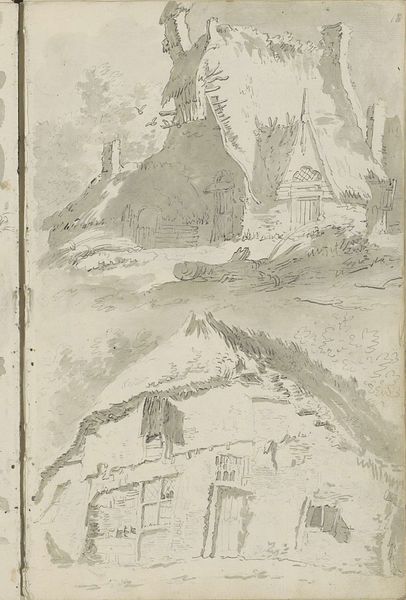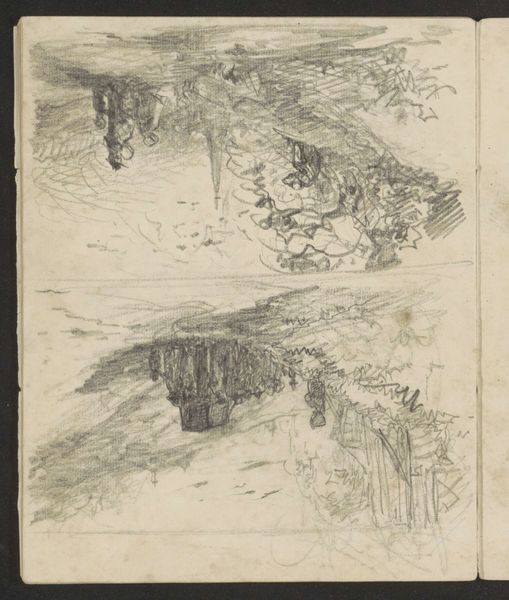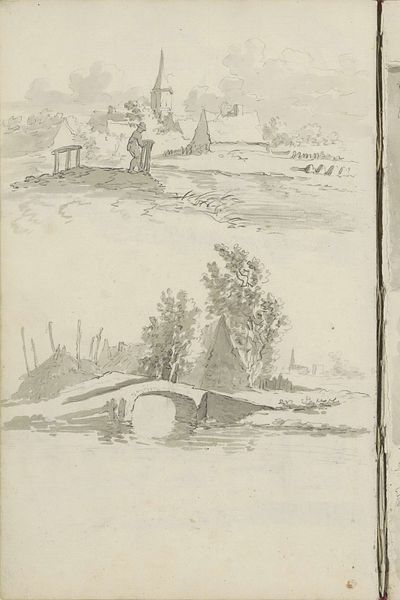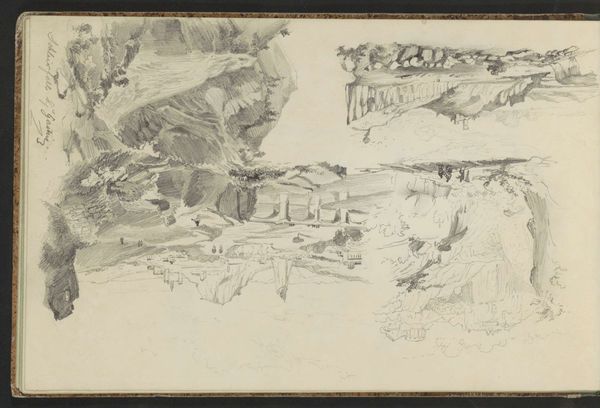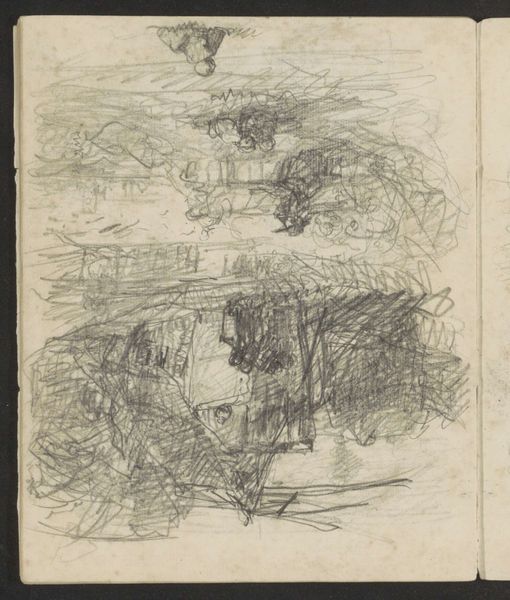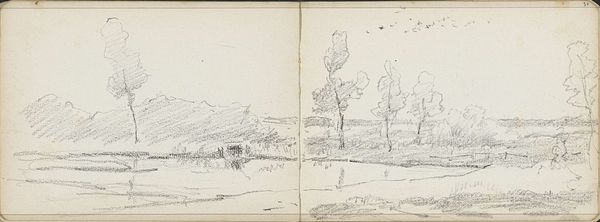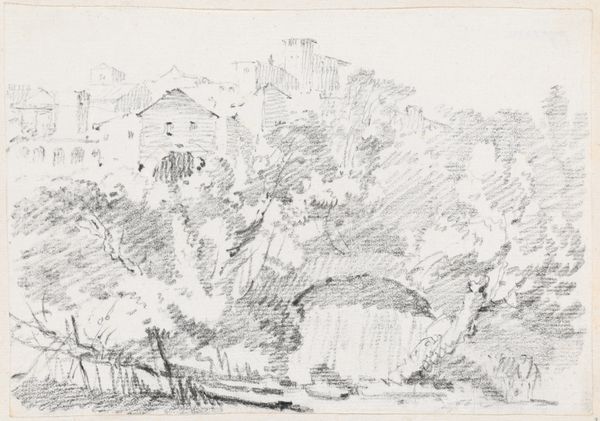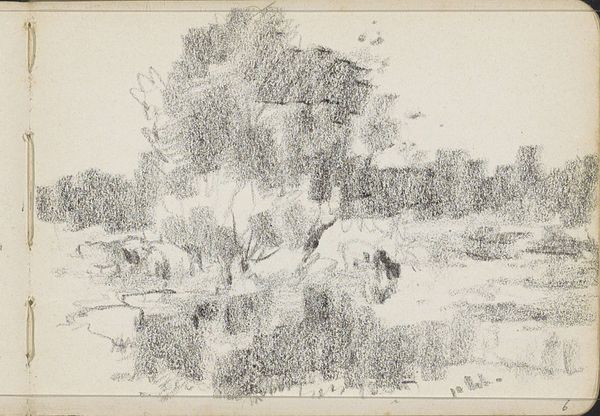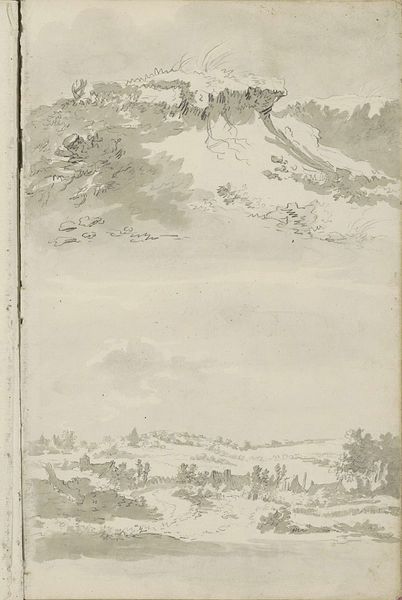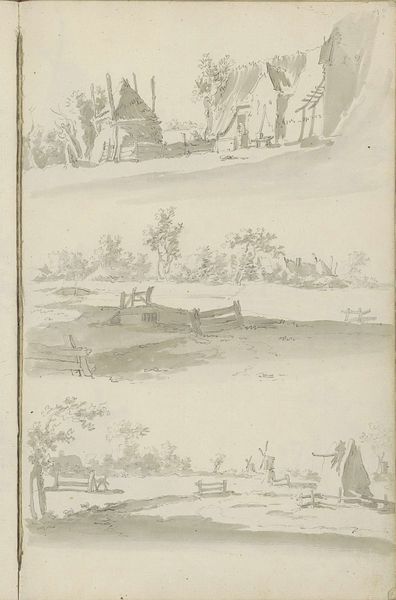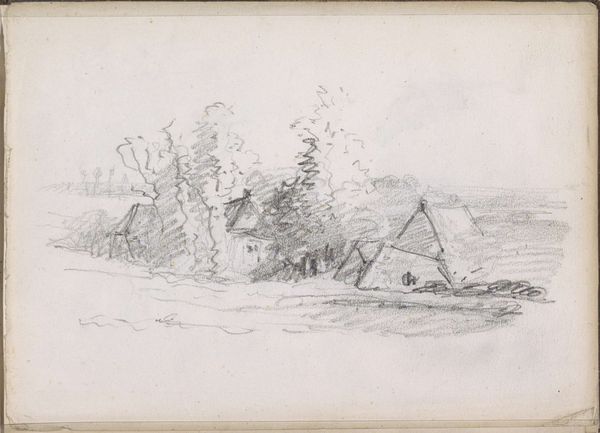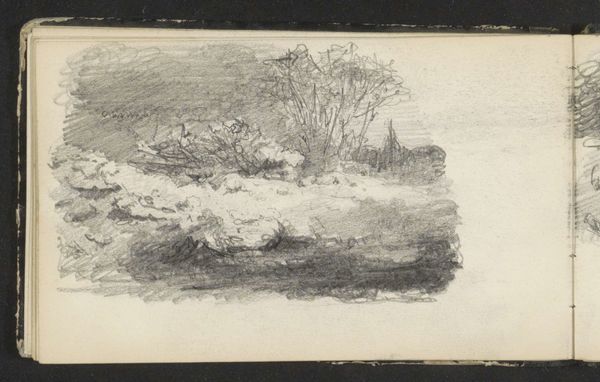
drawing, paper, ink, pencil
#
drawing
#
pen sketch
#
pencil sketch
#
landscape
#
paper
#
ink
#
pencil
#
sketchbook drawing
#
genre-painting
#
watercolor
Copyright: Rijks Museum: Open Domain
Curator: Ah, here we have "Boerderijen," a pen, pencil, and ink drawing with watercolor on paper, created around 1780 to 1800 by Barend Hendrik Thier. Editor: My immediate feeling? Utter tranquility. The soft, muted tones evoke a sense of quiet solitude, a secret little world rendered in delicate lines. I can almost smell the damp earth and hear the rustling of leaves. It feels deeply personal, a fleeting moment captured in time. Curator: Absolutely. Thier, working at the end of the 18th century, presents a charming slice of rural life. You get two for one with the sketchbook composition, with landscape details and genre painting elements on the same page, and it offers insight into the realities and ideals of agrarian existence. Editor: The way he uses the light and shadow, particularly on the thatched roofs, gives the farmhouse a gentle, almost dreamy quality. The composition with a small human figure atop of one of the house creates a juxtaposition, amplifying both scale and inviting the observer to fill that figure with narratives. I imagine children playing here or someone quietly tending the hearth. Curator: It reflects the growing interest of the Dutch middle class in the countryside. Paintings became increasingly devoted to what one would consider now leisure landscapes depicting ideal pastoral visions as rural-urban connections intensified. The art market answered by creating demand for genre scenes that were not overly critical of class division. Editor: I also find it interesting how seemingly simple lines carry such an emotional weight. It's not trying to be grand or impressive; it simply offers a quiet moment of contemplation of human’s inhabitation and domestication of natural environments. It suggests to me, this image, how contentment and closeness might exist in the same time-space. Curator: Indeed. The seemingly casual sketch reveals Thier's command of draftsmanship, transforming ordinary buildings into something both picturesque and historically significant. Art institutions at that time aimed at moral progress to instruct public through art. Artists played that game rather well, I would say, Editor: In a way, "Boerderijen" feels like a gentle invitation to slow down and find beauty in simplicity. Thanks for making me reflect about it beyond what it shows and see what it does, I love the perspective you provided today. Curator: The pleasure was all mine! This drawing prompts me to appreciate how representations of countryside helped form national identity, offering comfort and familiarity at a time of immense political and social change. It’s not just art, but history itself, whispered in ink and paper.
Comments
No comments
Be the first to comment and join the conversation on the ultimate creative platform.
